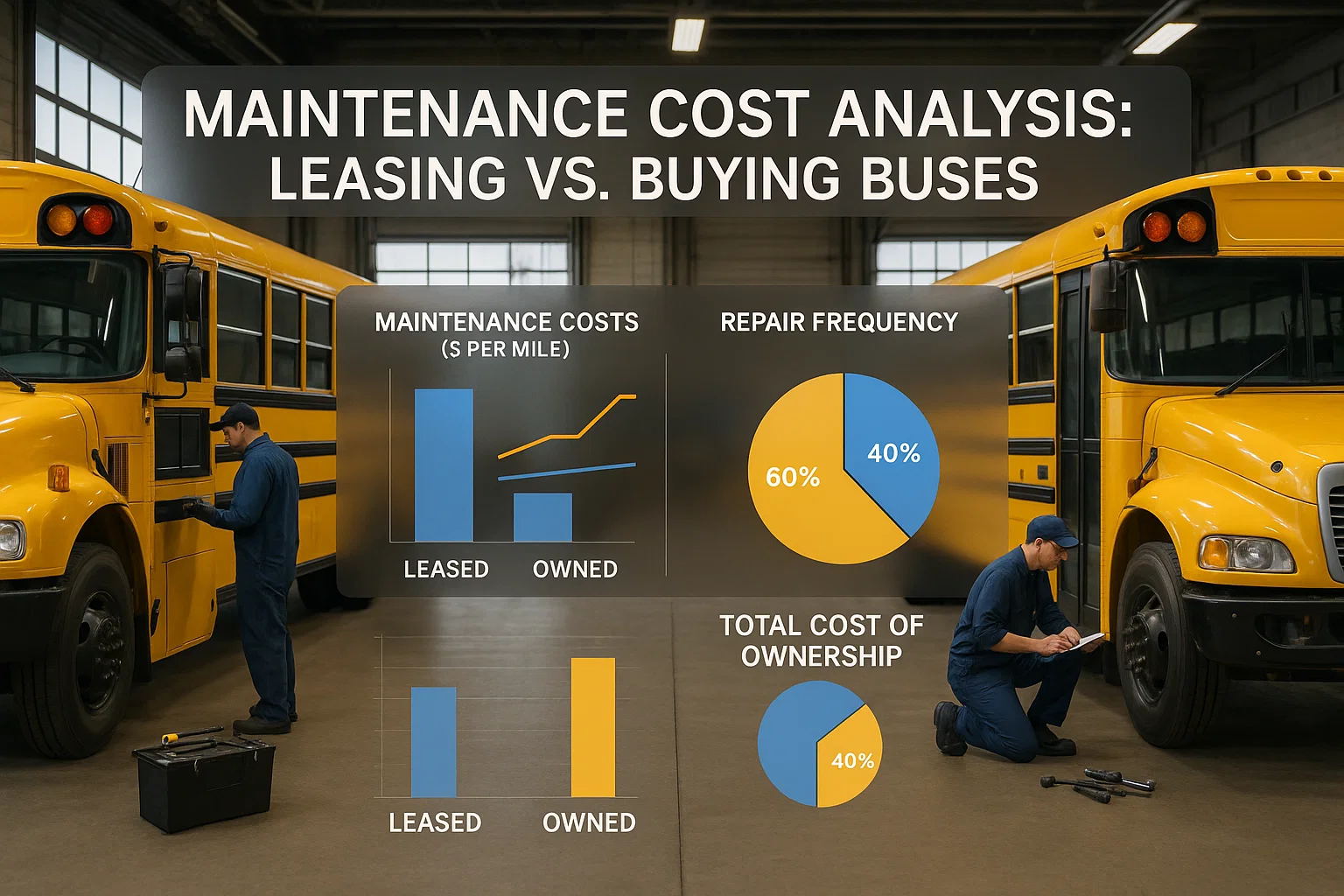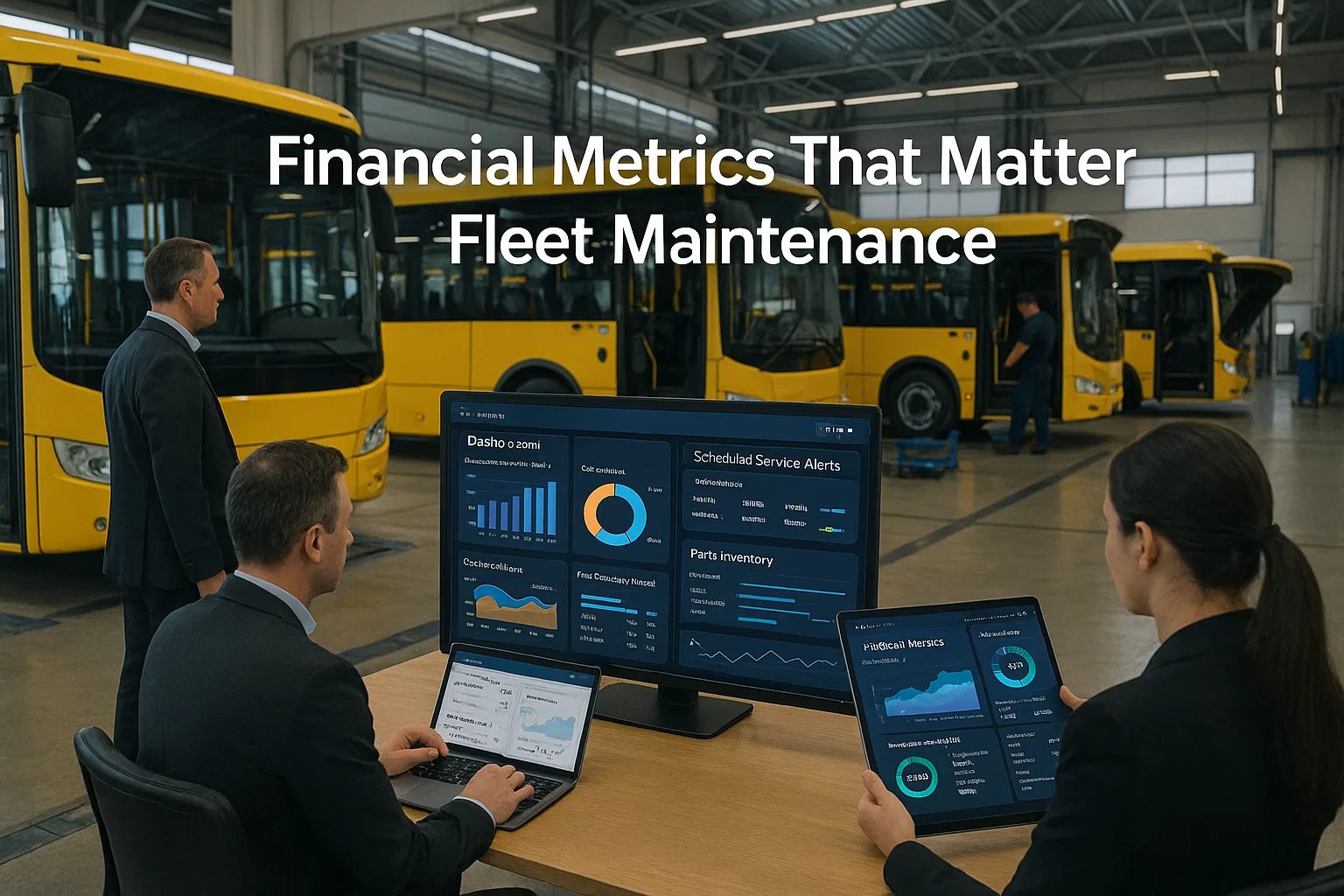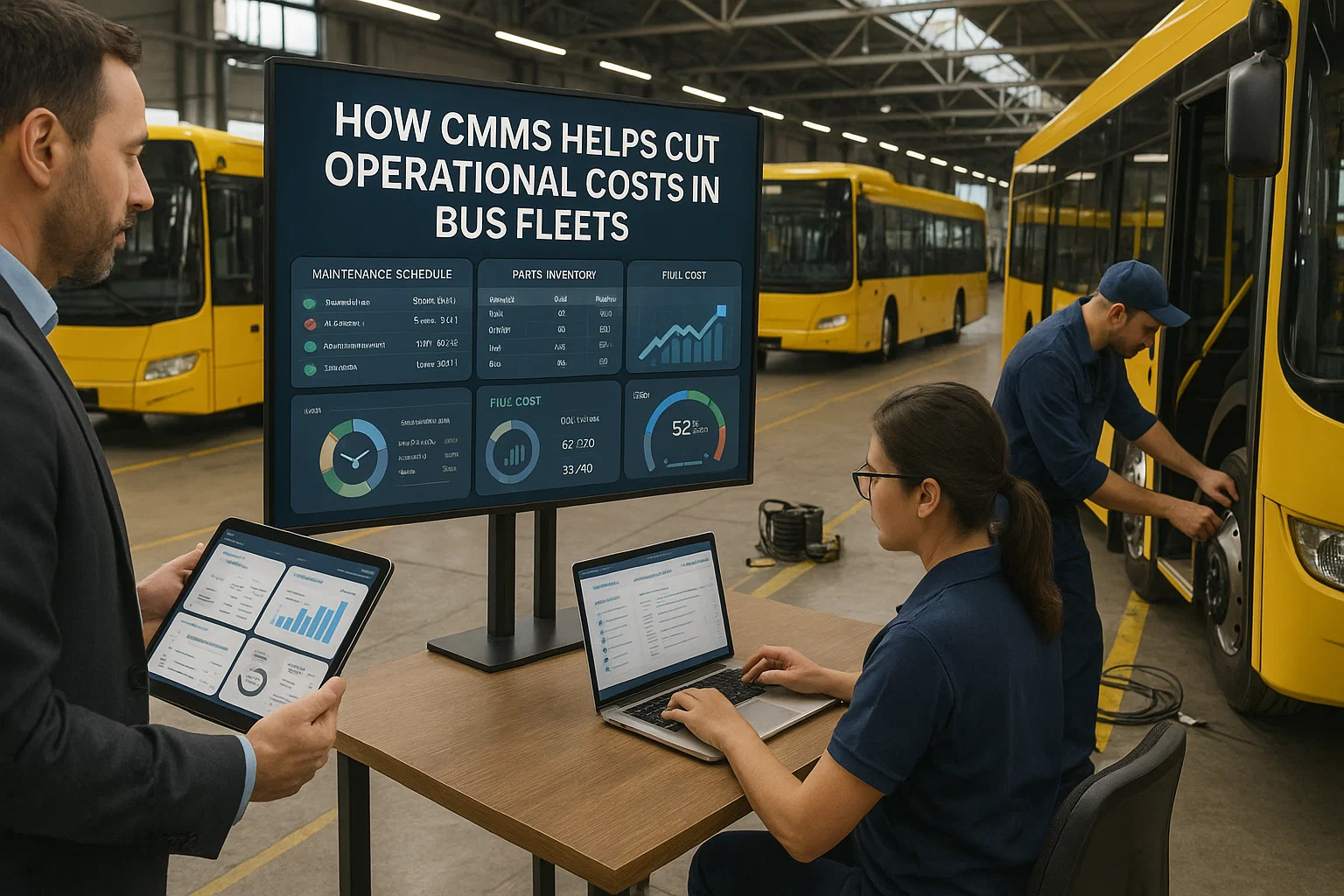US bus fleet operators face increasingly complex compliance requirements that demand meticulous documentation and reporting. Federal Motor Carrier Safety Administration (FMCSA) regulations, Department of Transportation (DOT) standards, and state-specific requirements create a web of obligations that can overwhelm even the most organized maintenance departments.
Manual inspection reporting processes expose fleets to significant risks including regulatory penalties, operational delays, and safety violations. Traditional paper-based systems and spreadsheet management often result in incomplete documentation, missed deadlines, and inconsistent data quality that can trigger costly audits and enforcement actions.
Advanced Bus CMMS platforms transform compliance management through automated inspection reporting systems that ensure consistent documentation, real-time regulatory updates, and seamless integration with maintenance workflows. Fleet operators utilizing automated systems report 45% reduction in compliance violations and 60% improvement in audit preparation efficiency.
Critical Compliance Challenges in Manual Reporting
High-Risk Documentation Gaps
- Incomplete Inspection Records: Missing signatures, timestamps, and required data fields that trigger automatic violations
- Delayed Defect Reporting: Late submission of critical safety issues that compromise fleet operation authority
- Inconsistent Data Quality: Varied reporting standards across technicians leading to regulatory scrutiny
- Lost Documentation: Paper records and digital files that become inaccessible during audits and inspections
Implementing automated inspection reporting through Bus CMMS platforms eliminates human error in compliance documentation while ensuring real-time submission of required reports. Advanced systems automatically flag missing information and guide technicians through complete inspection workflows.
Automated Report Generation Architecture
Modern Bus CMMS systems utilize sophisticated automation architecture that integrates inspection data collection, regulatory requirement mapping, and report generation into seamless workflows. This technology foundation ensures consistent compliance while reducing administrative burden on maintenance teams.
Core System Components
Automated reporting systems combine mobile inspection applications, cloud-based data processing, regulatory database integration, and intelligent report formatting. These components work together to transform raw inspection data into compliant documentation that meets specific regulatory requirements for different jurisdictions and fleet classifications.
Integration capabilities with existing fleet management systems, telematics platforms, and regulatory submission portals create comprehensive compliance ecosystems. Bus CMMS platforms provide APIs and data connectors that ensure seamless information flow between inspection activities and compliance reporting requirements.
Compliance Workflow Optimization
Effective automated inspection reporting requires optimized workflows that balance regulatory requirements with operational efficiency. Advanced Bus CMMS systems create dynamic inspection schedules based on regulatory calendars, vehicle utilization patterns, and maintenance histories.
Automated Inspection Schedules
Daily Safety Inspections
Pre-trip and post-trip automated checklists with mandatory photo documentation and GPS verification for DOT compliance
Periodic Maintenance Inspections
Automated 30, 60, and 90-day inspection workflows with regulatory requirement mapping and defect tracking
Annual Safety Inspections
Comprehensive annual inspection protocols with automated report generation and regulatory submission capabilities
Real-Time Regulatory Updates Integration
Staying current with evolving compliance requirements presents ongoing challenges for fleet operators. Advanced Bus CMMS platforms integrate with regulatory databases to automatically update inspection protocols and reporting requirements as regulations change.
Dynamic Compliance Management
- Regulatory Database Integration: Automatic updates from FMCSA, DOT, and state transportation departments ensure current compliance standards
- Multi-Jurisdiction Support: Automated report formatting for different state and federal requirements based on route operations
- Alert Systems: Proactive notifications of regulation changes and upcoming compliance deadlines
- Audit Trail Automation: Complete documentation chains that satisfy regulatory review requirements
Mobile Inspection Technology Integration
Mobile technology transforms inspection processes by enabling real-time data collection, automated photo documentation, and instant report generation. Modern Bus CMMS mobile applications guide technicians through standardized inspection protocols while automatically capturing required compliance data.
Mobile Inspection Features
Advanced mobile inspection applications include GPS verification, timestamp automation, digital signature capture, and photo annotation capabilities. These features ensure complete documentation while reducing inspection time and improving data accuracy.
Offline synchronization capabilities enable inspections in areas with limited connectivity, with automatic data upload when network access is restored. This ensures consistent inspection completion regardless of operational location or network availability.
Defect Management and Reporting Automation
Critical Defect Response Protocols
- Immediate Alert Generation: Automatic notifications for safety-critical defects requiring immediate out-of-service actions
- Regulatory Notification: Automated submission of required defect reports to appropriate regulatory agencies
- Repair Tracking: Complete documentation of defect resolution and return-to-service inspections
- Trend Analysis: Automated identification of recurring defect patterns for preventive action
Automated defect management through Bus CMMS platforms ensures immediate compliance response while maintaining complete audit trails. Integration with parts inventory and technician scheduling optimizes repair workflows and minimizes vehicle downtime.
Data Analytics and Compliance Reporting
Advanced analytics capabilities transform inspection data into actionable compliance insights. Bus CMMS platforms provide comprehensive reporting dashboards that monitor compliance metrics, identify risk patterns, and optimize inspection scheduling.
Analytics Applications
Predictive analytics identify vehicles approaching inspection deadlines, maintenance personnel workload optimization, and compliance risk assessment. Machine learning algorithms analyze historical inspection data to predict potential compliance issues and recommend preventive actions.
Automated report generation for management dashboards, regulatory submissions, and audit preparation reduces administrative workload while ensuring consistent data presentation. Custom report builders enable fleet-specific compliance reporting that addresses unique operational requirements.
Cost-Benefit Analysis of Automation
Implementing automated inspection reporting through Bus CMMS systems delivers measurable returns through reduced compliance violations, improved operational efficiency, and enhanced safety performance. Industry studies demonstrate average cost savings of 40-50% in compliance-related expenses.
Financial Benefits
Reduced penalty payments, improved audit performance, decreased administrative labor costs, and enhanced fleet availability contribute to significant operational cost reduction. Fleet operators report payback periods of 8-12 months for comprehensive automated inspection systems.
Implementation Best Practices
Successful Automation Implementation
- Phased Deployment: Gradual rollout of automated systems to ensure smooth transition and staff adaptation
- Staff Training Investment: Comprehensive training programs on Bus CMMS mobile applications and compliance workflows
- Data Migration Planning: Systematic transfer of historical inspection records and compliance documentation
- Continuous Monitoring: Regular assessment of system performance and compliance metrics for ongoing optimization
Conclusion
Automated inspection reporting represents a critical evolution in bus fleet compliance management. The integration of advanced Bus CMMS platforms with mobile inspection technology, regulatory database connectivity, and intelligent reporting capabilities creates comprehensive compliance solutions that protect fleet operators from regulatory risks while optimizing operational efficiency.
Success in compliance automation requires strategic implementation, staff training investment, and commitment to continuous improvement. Fleet operators who embrace automated inspection reporting position themselves for enhanced regulatory compliance, reduced operational costs, and improved safety performance that benefits both operations and passenger safety.
Ready to Automate Your Inspection Compliance?
Discover how Bus CMMS can transform your inspection reporting processes and ensure consistent regulatory compliance for your fleet operations.








